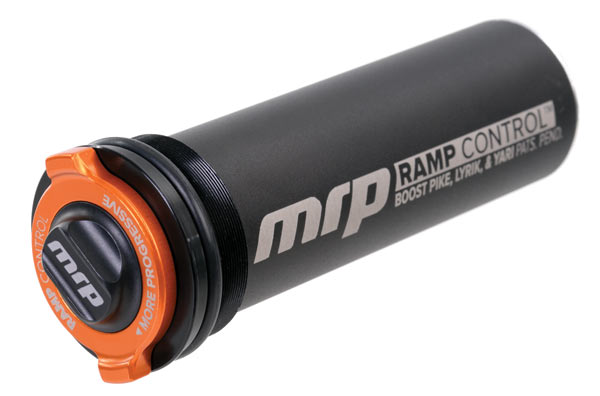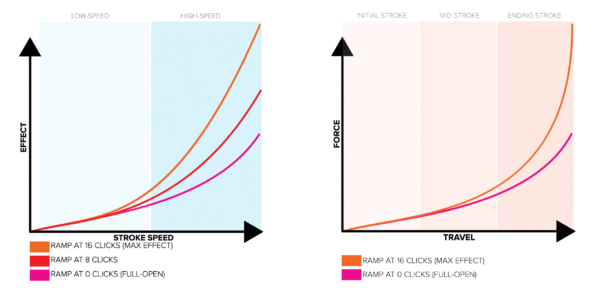Last week, we dove deep into how air volume affects your fork’s performance and how you can tune it to match you and your riding style. As we researched that, we found that MRP’s Ramp Control Cartridges offered similar tuning options, but with additional benefits.
As we learned, adding spacers reduces air volume, which makes the fork more progressive in the end stroke, helping it ramp up and prevent bottom out. The downside is that as your air volume gets smaller, you typically need to run higher air pressure, which can reduce small bump sensitivity. Here’s how MRP minimizes that tradeoff, giving you the benefit of larger volume and more end stroke control…
Noah Sears, brand manager for MRP, says “there’s some confusion this is a volume adjustment, and it’s not. It’s an independent adjustment that’s solely focused on affecting ending stroke spring curve (aka “ramp”) on high speed hits.”
Translation: You can take advantage of your full air volume for a supple ride and small bump finesse, but still control the ramp on bigger, high speed hits to prevent harsh bottom out.
“There’s a lot of downsides to (volume spacers) in our opinion,” says Sears. “With typical air volume spacers, what you typically really get is just ‘bottom out control’, not true control over the ramp. With our cartridges, there’s a valve that goes into a secondary chamber, which controls how quickly and how much air can move from the main chamber into that secondary chamber. The effect is that you have a larger air volume for low speed riding and small bumps, and a smaller chamber when you hit something really big, which will ramp harder and prevent a hard bottom out.”
Basically, a 16-position dial changes the size of a port that lets air move in and out of the cartridge. As the hole gets smaller, less air can move through. So on a big hit, it’s blocking more air than it’s letting through, effectively shutting off use of the upper section, which has the temporary effect of reducing usable air volume. So the fork ramps up more quickly for that single hit, then immediately goes back to using the full air chamber. This is what we call having your cake and eating it, too.
Technically, the only condition where the RCC doesn’t help is in a full travel low speed hit, which might possibly happen if you were to have a huge radius roll out from a fast descent, but since we’ve never actually fully compressed our forks on something like that, the chances of that being an issue are slim to none. And the everyday benefits of something like this far outweigh those unlikely outliers.
MRP offers a Ramp Control upgrade cartridge for most Rockshox and Fox forks for $140, and it’s standard equipment on their own Stage fork. Check it out at MRPbike.com.
The fun never ends. Stay tuned for a new post each week that explores one small suspension tech, tuning or product topic each week. Got a question you want answered? Email us. Want your brand or product featured? We can do that, too.


